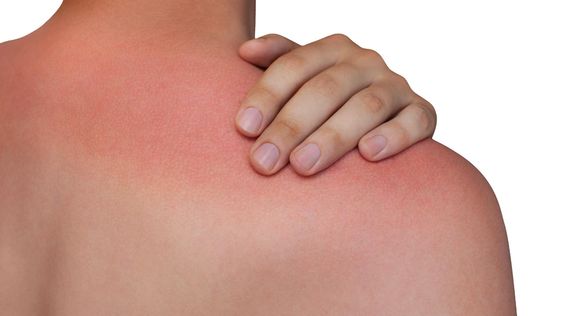Introduction:
Heat rash, also known as prickly heat or miliaria, is a common skin condition that occurs when sweat ducts become blocked, trapping perspiration under the skin. This blockage leads to inflammation and the appearance of small, itchy blisters or bumps. Heat rash is particularly prevalent during hot, humid weather, affecting people of all ages.

While generally harmless, heat rash can cause discomfort and irritation. Understanding the causes, symptoms, and effective treatment options can help you find relief and prevent future outbreaks. This comprehensive guide provides essential tips for treating heat rash and keeping your skin cool and comfortable all summer long.
Identifying and Understanding Heat Rash:
Heat rash typically presents as clusters of small, red bumps or blisters on the skin. Itching, prickling, and a slight burning sensation are common accompanying symptoms. The rash most frequently appears in areas where sweat tends to accumulate, such as the:
- Neck
- Upper chest
- Armpits
- Groin
- Elbow creases
Effective Treatment Options for Heat Rash:
Most cases of heat rash clear up on their own within a few days with simple home care measures. Here are some effective tips to alleviate symptoms and promote healing:
- Cool Down: The first step in treating heat rash is to cool down the affected area. Take a cool shower or bath, or apply a cool compress to the rash for 10-15 minutes at a time.
- Keep Skin Dry: Pat your skin dry gently after showering or bathing, and avoid rubbing the affected area. Wear loose-fitting, breathable clothing made of cotton or moisture-wicking fabrics.
- Avoid Irritants: Avoid using harsh soaps, lotions, or powders that can irritate the skin and exacerbate the rash. Opt for fragrance-free, hypoallergenic products instead.
- Over-the-Counter Relief: Over-the-counter creams and lotions containing calamine lotion or hydrocortisone cream can help soothe itching and reduce inflammation.
- Stay Hydrated: Drinking plenty of water can help regulate body temperature and reduce sweating.
When to See a Doctor
While most cases of heat rash are mild and resolve with home care, it's important to consult a doctor if:
- Your symptoms are severe or worsen despite home treatment.
- The rash shows signs of infection, such as increased redness, swelling, or pus.
- You develop a fever.
Remember, prevention is key! By taking steps to stay cool and dry during hot weather, you can significantly reduce your risk of developing heat rash.

.jpg)